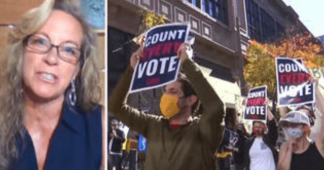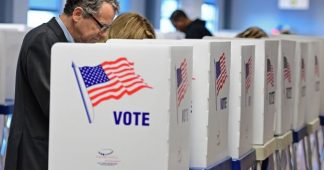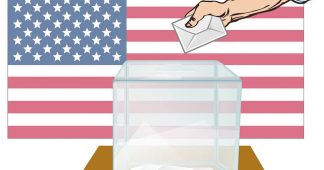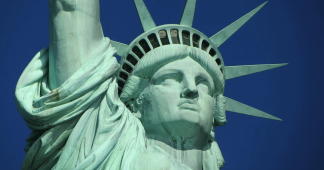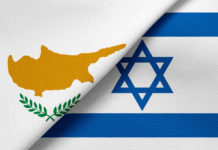How the 2000 Election Came Down to a Supreme Court Decision
As Florida’s electoral votes became too close to call, controversy ensued over hanging chads, dimpled chads and butterfly bullets
By Lesley Kennedy
Nov.4, 2020
Five hundred thirty-seven votes.
That’s all that separated Democrat Al Gore and his Republican challenger George W. Bush when, on November 26, 2000, three weeks after Election Day, the state of Florida declared Bush the winner of its 25 electoral votes in the race for U.S. president.
After a wild election night on November 7, 2000, during which TV networks first called the key state of Florida for Gore, then for Bush, followed by a concession by Gore that was soon rescinded, the results for who would be the nation’s 43rd president were simply too close to call.
In the 36 days that followed, Americans learned Gore had won the popular vote by 543,895 votes. But it’s winning the Electoral College that counts. As accusations of fraud and voter suppression, calls for recounts and the filing of lawsuits ensued, the terms “hanging chads,” “dimpled chads” and “pregnant chads” became part of the lexicon.
Andrew E. Busch, professor of government at Claremont McKenna College and co-author of The Perfect Tie: The True Story of the 2000 Presidential Election, says as votes were counted and Bush’s lead grew, TV networks retracted their premature call of Gore, instead giving the state to Bush.
“When the lead shrank to about 2,000 votes in the early hours of the morning, TV reversed again, rescinded the call for Bush, and declared Florida as yet undetermined,” he says. “The initial problem was failure of the exit polls, for which they later overcompensated.”
Too Close to Call
The result of the 2000 presidential election ending in such a close call wasn’t a huge surprise: According to The Perfect Tie, the Gallup tracking poll showed nine lead changes during the fall campaign, with Bush holding a slight lead in the final week of the campaign, and Gore gaining a swing in momentum on Election Day.
As it became clear the final vote in Florida, which would decide the election, was basically a tie, Gore rescinded his concession during a phone call. Bush, according to The New York Times, asked, ”You mean to tell me, Mr. Vice President, you’re retracting your concession?” That was followed by Gore’s response: ”You don’t have to be snippy about it,” and, ”Let me explain something. Your younger brother is not the ultimate authority on this.”
Gore was referring to the fact that Florida’s governor at the time was Jeb Bush, Bush’s younger brother. Further fueling the fire: Katherine Harris, Florida’s secretary of state, charged with overseeing an impartial election, was a Republican who served as co-chair of Florida’s Bush for President election committee.
“When an election is this close, and closely fought, a recount along these timelines is to be expected,” says Rick Hasen, professor of law and political science at the University of California, Irvine, and author of The Voting Wars: From Florida 2000 to the Next Election Meltdown. “The Franken-Coleman recount of the Minnesota Senate race in 2008 took almost nine months to fully resolve. But for a presidential election we need finality much sooner, making everything more difficult.”
Busch says recounts at the local or state level are not infrequent, but an event like this, at the presidential level, hadn’t occurred for some time.
“In 1876, there was a much bigger dispute,” he says, referring to the election in which Republican Rutherford B. Hayes eventually emerged as president after neither major party candidate earned enough electoral votes to win without 20 disputed electors. A congressional stalemate led to the creation of a commission that controversially awarded all 20 disputed electors to Hayes.
“There was a lot of maneuvering, but not the same scenario,” Hasen says. “Florida in 2000 took so long because of multiple legal challenges, stops and starts to the recount that carried it beyond the norm.”
The Florida Recount and Hanging Chads
Over the next few weeks, with no winner yet determined, officials conducted an electronic recount, in which ballots were re-fed into the same machines, but Gore asked for a hand recount. “There was much squabbling about when, how, and whether to do such hand recounts,” according to The Voting Wars. “One law firm alone eventually handled forty election-related lawsuits for the Florida secretary of state.”
The ballots, themselves, became an issue of contention. The visually confusing paper punch-card “butterfly ballot,” in which two columns of candidate names were separated by a middle column with marks to be punched through, was blamed for some Gore votes going to Pat Buchanan due to a misalignment of the names and marks.
And then some of those marks failed to get properly punched through.
“Some counties in Florida used a card-punch system for voting,” Busch says. “Voters would get a card with little perforated squares that lined up with names on the ballot. They would position a card puncher over the square belonging to the candidate they wanted and would push it through the square, creating a hole that would be read by a vote-counting machine. The little square that is supposed to be knocked out is called the ‘chad.’”
At issue: Some holes were not completely punched out of the ballots. “A chad that was not punched out all the way—i.e. was still hanging by one, two or even three corners to the ballot—was called a ‘hanging chad.’” Busch says. “Election officials had to devise standards by which to count the ballots with hanging chads. Do you count it as a valid vote as long as there is some evidence that a voter tried to cast a vote? Do you only count it if three of the four corners are knocked out? Something in between? No consistent standard was developed, which was a key issue in Bush v. Gore.”
After lawsuits, challenges and recounts, the Florida Supreme Court ordered a recount of undervotes in all of Florida’s 67 counties, which was quickly appealed by Bush, and the case headed to the U.S. Supreme Court.
The Supreme Court Decision: Bush v. Gore
According to Busch, the Supreme Court had telegraphed its displeasure with how things were going in Florida a week or so before by sending the first Bush plea to the court back to the Florida Supreme Court by a 9-0 vote, “saying basically, ‘We would rather not get involved, but you are messing this up. Fix it.’”
The Florida Supreme Court ignored the warning signal and pressed forward with its call for a recount, and the case was returned to the U.S. Supreme Court. The case, according to Hasen’s book, put the Florida election under a microscope, examining election machines, voter lists, vote-counting rules, the state’s poorly drafted election statutes, partisan election officials and the role of courts.
“At that point there were actually two key votes,” Hasen says. “The first was a 7-2 determination that the Florida recount, as it was being conducted, was unconstitutional on the grounds that there were no clear standards that were being applied consistently to all ballots. Then, by a 5-4 vote, the court declared that time had run out to devise a remedy. That stopped the process, with Bush ahead.”
The decision resulted in one of the most controversial Supreme Court decisions in American history. With the Florida win, Bush led Gore in electoral votes nationally 271-266, and, out of legal options, Gore conceded.
“The court divided along ideological lines with the conservatives backing Bush, the more conservative candidate, and the liberals backing Gore, the more liberal candidate,” Hasen says. “The case presented difficult questions about court intervention in a process that both sides thought was infected with politics from the opposing side.”
Consequences of the 2000 Election
With the decision, Bush became the first president since Benjamin Harrison, in 1888, to lose the popular vote, but win the general election. Not surprising, Democrats were unhappy with the results, Busch notes, while Republicans were happy and relieved.
“I think independents were generally relieved that the partisan bickering was over,” he says. “Overall, about 80 percent of poll respondents told Gallup that they accepted the results as legitimate.”
One result of the outcome: Candidates learned not to concede too early, Busch adds. “One of Gore’s political problems throughout the five weeks was that he had conceded to Bush, then withdrew his concession, so he was widely seen as a bad loser,” he says. “Ever since 2000, both parties have maintained a stable of attorneys prepared to swarm over the next Florida on a moment’s notice.”
The 2000 election dispute also contributed to the growing polarization in American politics, according to Busch. “Democrats saw Bush as a president who snuck in by the good graces of the Supreme Court, and Republicans saw Gore and Democrats as people who would change rules in the middle of the game just to hold on to power,” he says.
Published at www.history.com


